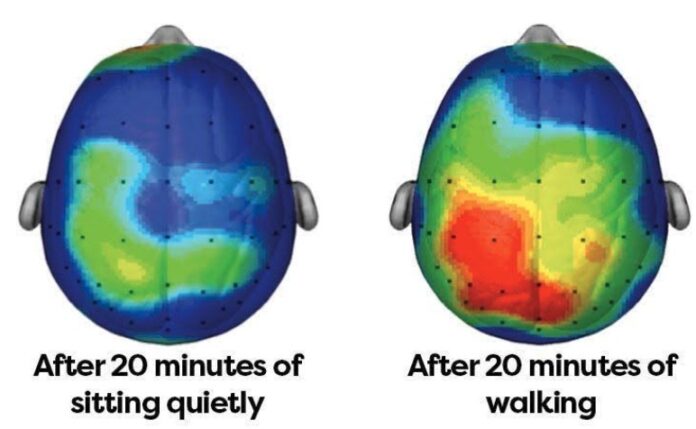Who remembers mall walkers? Those dedicated women and men in their aerobic wear, high-top socks, (usually) all-white sneakers with deadly elbows on a mission? I know I do.
I think as a teenager, as I was bouncing back and forth between Hot Topic and Abercrombie & Fitch (I was just as confused then as you are now) I remember thinking, why do these mall walkers take it so seriously, and how good can walking actually be for you?! I mean … it’s *yawn* walking.
Fast forward 25 years, I get it, and I dig it, and here’s why:
In the fast-paced world we live in, finding the time and motivation to exercise can be a challenge. However, there is a simple and accessible solution right at our feet. Beyond being a mode of transportation, walking has emerged as a powerful form of exercise, offering a plethora of physical and mental health benefits.
Physical benefits: Walking is a low-impact exercise that provides numerous physical advantages. It improves cardiovascular health by lowering blood pressure and reducing the risk of heart disease. A brisk walk can also aid in weight management by burning calories and boosting metabolism. Regular walking strengthens muscles, improves joint flexibility and enhances overall endurance. According to a study published in the American Journal of Preventive Medicine, individuals who engage in walking regularly experience a lower incidence of chronic diseases.
Mental & cognitive health benefits: In addition to the physical advantages, walking is a mood enhancer. It releases endorphins, the body’s natural feel-good chemicals, reducing stress and anxiety. Studies have shown that a daily walk can contribute to better cognitive function and a lowered risk of developing mental health disorders. The rhythmic nature of walking provides a meditative effect, promoting relaxation and mental clarity. A recent study at the University of Illinois found that moderate aerobic exercises like walking can help enhance your cognitive skills (attention, reasoning, memory and such), making it an easy and enjoyable way to boost brain health. Whether you opt for a leisurely stroll or a brisk walk, incorporating walking into your daily routine can cultivate a clearer mind and sharpen concentration.
Ease and accessibility: One of the most appealing aspects of walking as an exercise is its simplicity and accessibility. No special equipment or gym memberships are required. All you need is a comfortable pair of shoes – no they don’t have to be all white – and you’re ready to hit the pavement , a trail or a mall – that is, if you can find one.
Frequency and recommendations: The American Heart Association recommends at least 150 minutes of moderate-intensity exercise per week, and walking easily fits into this guideline. Aim for a brisk walk of 30 minutes most days of the week. Break it down into shorter sessions if needed – a 10-minute walk three times a day can be just as effective.
So, whether you are in snowy Buffalo (so sorry Bills) or in the balmy Florida Keys, you can get your walk on any time and anywhere. Just make sure to keep your elbows in check.

























